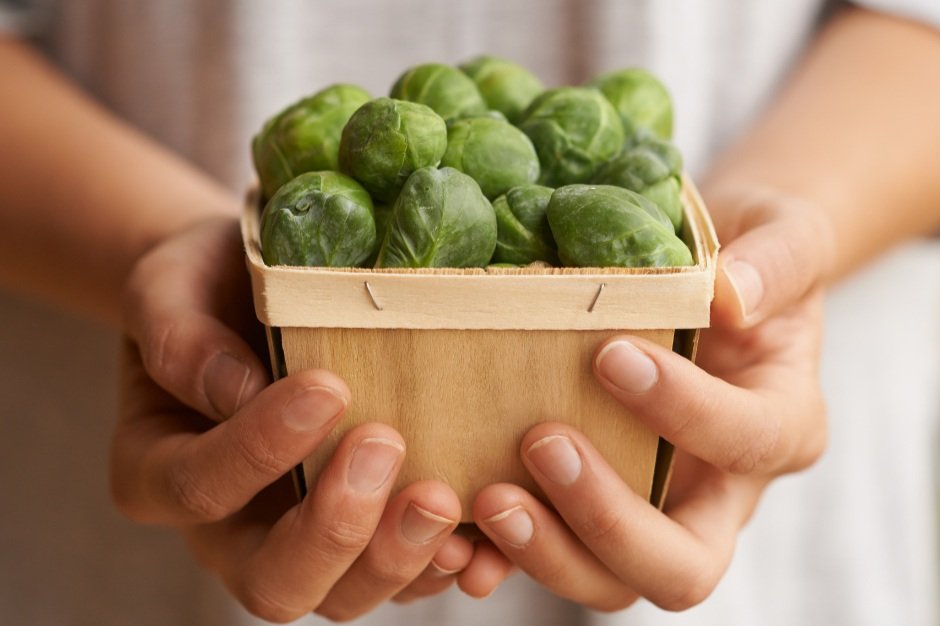When I say horseradish many people will think of shrimp cocktail. But there are many ways you can use horseradish to flavor foods.
Growing Swiss Chard: Hardy, Easy to Grow Crop in Zone 6
Grow Kohlrabi in Zone 6B
Kohlrabi is an unusual vegetable which makes it quite fun to grow. Many people have never heard of it or simply don’t know how to grow this strange-looking crop.
Whether you prefer to eat it raw in salads or roasted in the oven, kohlrabi is a fantastic vegetable to add to your garden for a longer growing season.
Grow Brussels Sprouts in Zone 6B
Brussels Sprouts have a bad reputation as being ‘yucky’ from consumers and hard to grow for gardeners. However, this member of the Brassica family is a great addition to your garden.
I struggled with growing Brussels sprouts for years and made some major mistakes. And I wouldn't dare take any of what I grew to the farmers market…
Growing Spinach in Zone 6B
Growing Jerusalem Artichokes in Zone 6
Grow Delicious Cabbage in USDA Zone 6
Growing The Best Corn in Zone 6B
Who can resist sweet corn on the cob at a summer barbeque? How about a bowl of home-grown popcorn for movie night? Corn is a great addition to any garden.
Corn does require a bit of extra care to protect it against pests and disease. Unfortunately, lots of our wildlife friends and those pesky insects love corn too!
Growing Asparagus Year After Year in Zone 6
Asparagus is a fantastic early spring delicacy full of vitamins. It can be pricey at the grocery store, so growing your own is a good way to save money. Asparagus takes one to three years to establish itself before it is ready to harvest - but it’s proof that delicious things come to those who wait!
Growing Hot Peppers in USDA Zone 6B
Growing Winter Squash in USDA Zone 6B
Winter squashes and pumpkins are one of my favorite foods to grow in the garden. There is nothing better to celebrate the start of autumn than going out to your patch to pick some squash and pumpkins!
Squashes germinate quickly and produce robust plants. Growing pumpkins is also a great activity to do with kids who might get impatient waiting for slower plants like carrots or peppers to come up.
Growing Potatos in Zone 6B
Growing Sugar, Snow, and Snap Peas in Zone 6B
Peas are a member of the legume family and are delicious vegetables with high protein content and many vitamins. I love them because they are one of the first vegetables you can harvest in the spring, which makes them a great way to usher in warm weather. Peas are a cool weather crop and in Zone 6B we can get a good harvest in spring and fall.
Growing Sweet Peppers in Zone 6B
Sweet peppers are a delicious garden crop, and also high in micronutrients. They can also add a cheerful splash of color to any garden. Sweet peppers make a great addition to salads, in cooking, or just sliced and eaten as a snack.
Peppers can be a challenge for beginning gardeners to grow, especially when starting from seed. But, with the right planning, anyone can enjoy fresh sweet peppers from their garden.
Growing Cucumbers in Zone 6B
Cucumbers are a refreshing treat from the garden on warm days; they are delicious for snacking or as an addition to salads and drinks. You can also use cucumbers to make pickles, which are a great way to preserve a harvest.
Cucumbers make a valuable addition to any garden and are easy to grow once you learn how. This guide answers all your questions.
Growing Green Beans in Zone 6
Growing Blueberries in Zone 6: A Complete Guide
Growing Tomatoes in Zone 6B: Complete Guide
Homegrown tomatoes are the ultimate in taste and texture. So much better than the cardboard grocery knockoff ones. Tomatoes need some care but are easy to grow and productive, saving you lots of money.
This is a complete guide to types and varieties that do well in Zone 6B, how to choose tomatoes, and how to grow your tomatoes from seed.
























